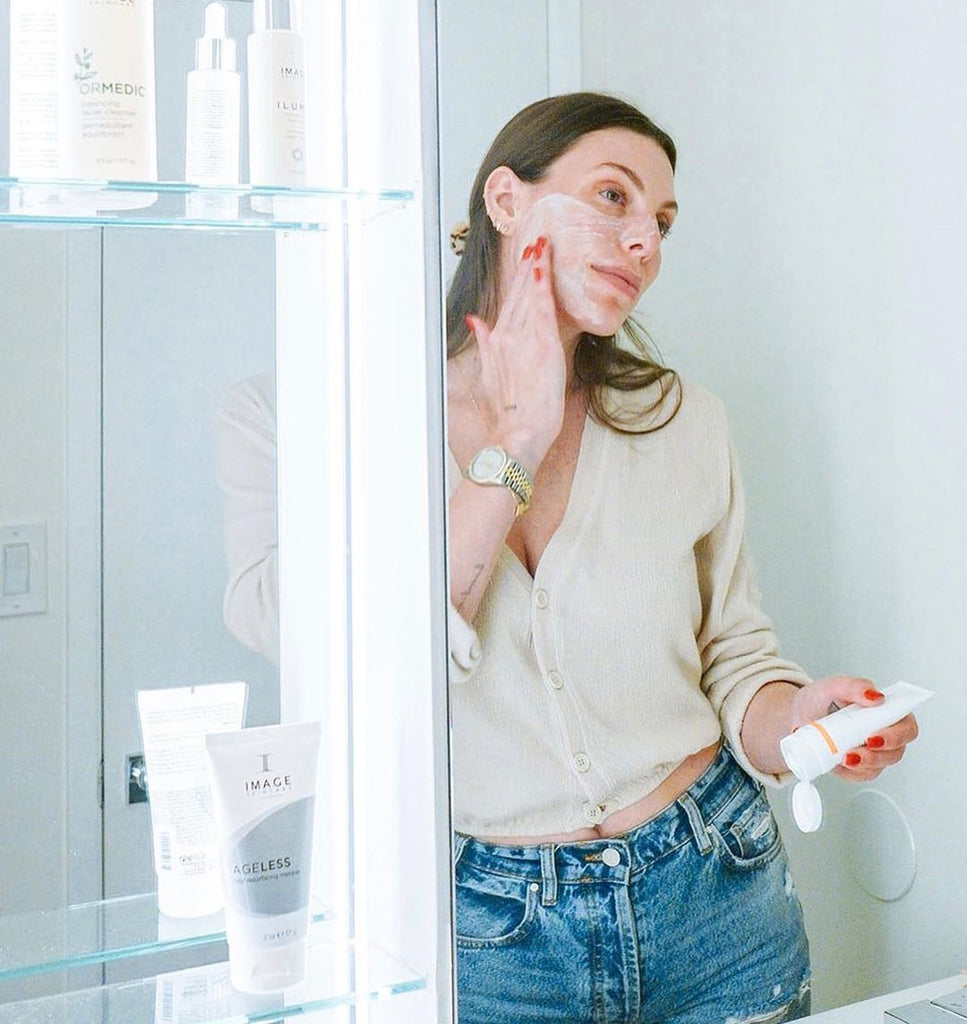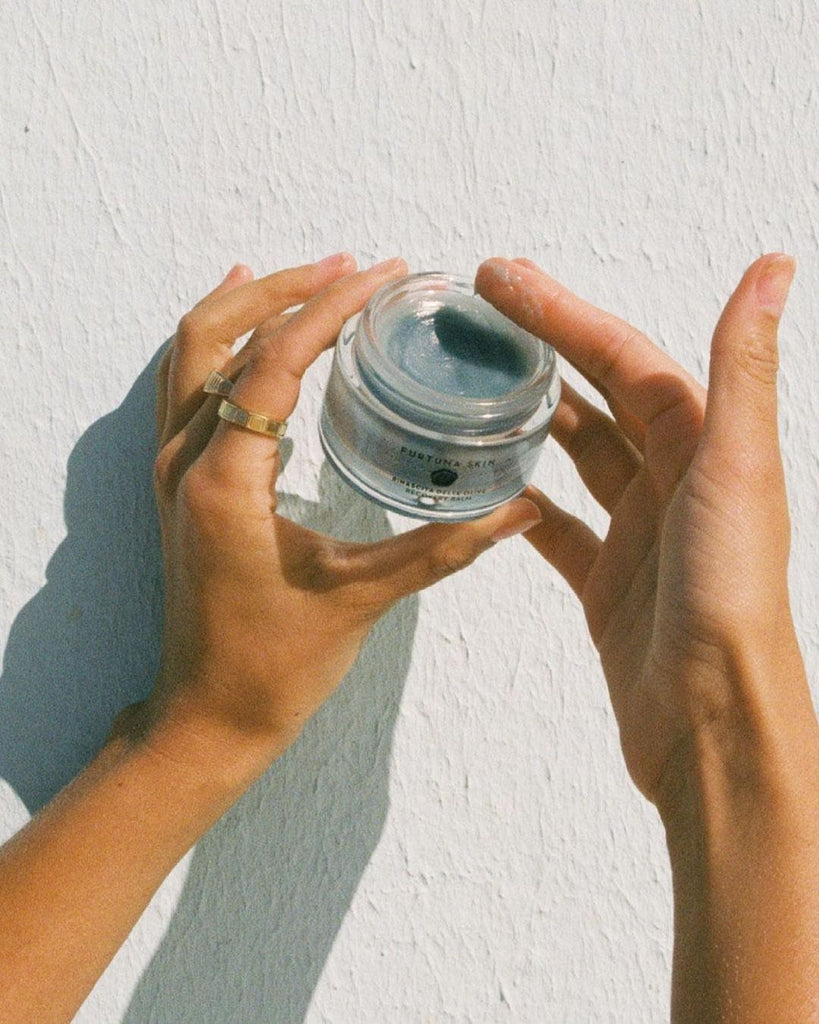If I had to rank every skincare treatment based on which one has the most intimidating name, chemical peels would probably top the list. The idea of voluntarily putting something on your face that's supposed to subsequently make your skin peel away may sound a little off-putting to some—read: those of us who have seen that episode of Sex and the City—but the good news is that chemical peels have earned a much better reputation these days thanks to advanced technology, gentler formulas, and some darn good PR.
Glycolic acid peels, in particular, are one of the more common types of chemicals peels, as these are generally used by people looking to exfoliate the skin and/or treat other skin concerns like hyperpigmentation, fine lines and wrinkles, and uneven skin tone.
“Glycolic peels are great because they can treat an array of different skin concerns at once for overall healthier and better-looking skin,” LA-based aesthetician Jasmine Barrow tells WH.
Before undergoing any major skin treatment, you should always consult a dermatologist or aesthetician who can customize a treatment to suit your needs. But if you're on the fence about whether or not you're ready to try a glycolic acid peel (or if you're simply curious and want to know more about them), here's what you need to know.
What is a glycolic acid peel?
Simply put, a glycolic acid peel is a type of chemical exfoliation treatment that removes dead skin cells from the top layer of the skin. Glycolic acid itself is an alpha hydroxy acid that's naturally found in sugarcane, and because its molecules are so small, your skin is able to absorb it quickly.
“This type of chemical peel dissolves the dead skin cells, revealing the younger smoother skin below,” Barrow says.
According to Barrow, glycolic acid peels are safe for all skin types, but they’re typically recommended for people who want to reduce hyperpigmentation, even out their skin tones, reduce wrinkles and fine lines, and temporarily reduce the appearance of large pores.
“It all really depends on the percentage and depth of the peel, but you should always consult with a professional and really talk through your sensitivities, concerns, and expectations,” she says.
How should I prep my skin for a glycolic acid peel?
If you’re getting a professional peel, there's one big thing you should know about the process. Since this is technically an exfoliating treatment, you should avoid using any other exfoliating products for at least a week leading up to your appointment, as over-exfoliating can cause the skin to be sensitive and reactive.
What happens during a glycolic acid peel?
Once skin is prepped, your aesthetician or dermatologist will begin the peel application. "The skin is prepped for a peel by cleansing and degreasing with an alcohol or acetone-based liquid, and then followed by the application of the peel," LA-based aesthetician Candace Marino says.
Dr. Jenny Liu, MD, adds: "An additional toner or product may be used to remove residual impurities so the peel can penetrate better." If you're getting a peel done in-office, your dermatologist or aesthetician may also apply a layer of petrolatum to the corners of your eyelids, nose, and mouth to avoid the peel pooling up in said areas and potentially causing irritation.
Next, your peel will be applied and your skin tech will wait for your skin to react to it. "Depending on the strength and type of peel, a certain reaction is desired to reach an effective end point," Dr. Liu says. After that, the peel will be neutralized.
Peels are also administered at different intensity levels—some can be mild, some can be deep—and deeper peels can cause your skin to peel just a little more once the treatment is over.
If you can't get an in-office peel, you can also try one at home, but just keep in mind that the after-effect may be a little less intense than that of a professional one. "Pick the right type of peel for your concern and type," Dr. Liu says. "AHA peels improve uneven skin tone and dullness, BHA peels can help with acne and pore congestion, and PHA peels may be better suited for sensitive skin."
A good at-home option if you're a newbie is The INKEY List Apple Cider Vinegar Acid Peel. "Its leave-on then wash off formulation makes for a mask-like treatment that can be easily performed at home," Dr. Liu says.
How to care for your skin post-peel.
The first thing you should know is that it's normal for skin to feel tingly or look red following an in-office treatment, according to Dr. Liu. (In some cases parts of your skin may even turn white, which is called "frosting.") Because of this, you should also avoid using retinol or any exfoliants in the days after your treatment as well. Your dermatologist or aesthetician should be able to tell you when it’s safe to begin using your regular skincare products again.
"Your skincare professional will give you post care instructions and also instruct you on when to resume acids, retinoids, and at-home exfoliants," Marino says. "This will be determined by the type of peel administered."
Also: “You must, must, must use sun protection and reapply thought out the day,” Barrow says. If you find yourself being exposed to direct sunlight during the day, Barrow also recommends wearing a hat. If you're getting a medium or deep peel, your dermatologist or aesthetician may recommend that you use an ointment or post-treatment cream in the days following your appointment.
What are the side effects, if any, of glycolic acid peels?
According to Barrow, any potential side effects you experience are dependent on the depth of the peel, though in general, most of her clients tend to not react much to mild glycolic peels.
“That's not to say that you won’t if you tend to have more sensitive skin,” she notes. “Deeper penetrative peels may lead to more side effects such as tightness, dryness, and shedding.” Itchiness and irritation can also be a side effect, she adds.
This article was originally published on womenshealth.com.



